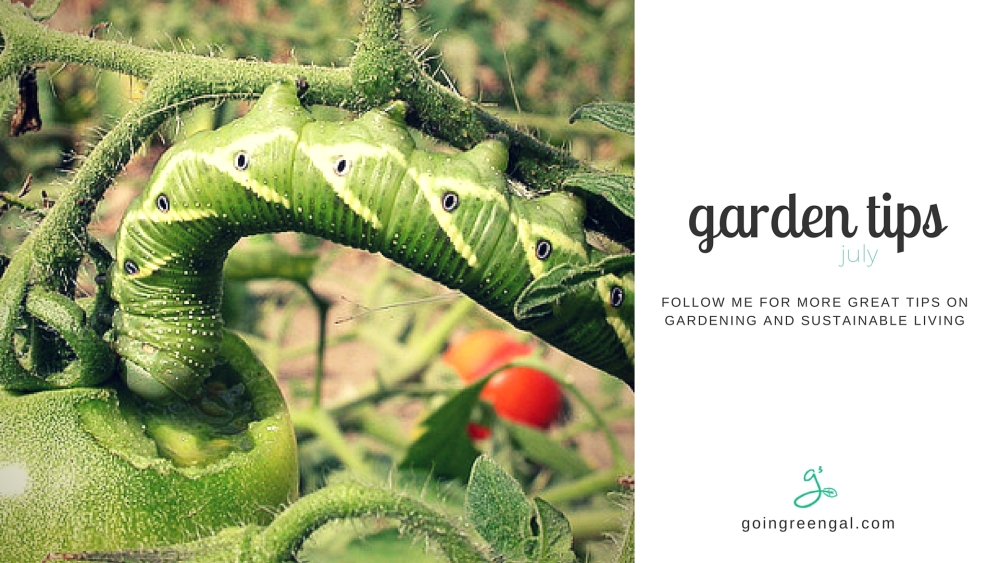 Check water levels of your plants by using a moisture meter or by digging into the soil a few inches to ensure that the roots have sufficient water. Whether you are using drip irrigation, sprinklers, or hand watering – it is important to make sure you aren’t over or under watering. Moisture meters can be purchased at most garden center or hardware stores for under $10.00.
Check water levels of your plants by using a moisture meter or by digging into the soil a few inches to ensure that the roots have sufficient water. Whether you are using drip irrigation, sprinklers, or hand watering – it is important to make sure you aren’t over or under watering. Moisture meters can be purchased at most garden center or hardware stores for under $10.00.
Remove suckers from roses. Suckers are rapid-growing, long canes that should be easy to spot. Prune them below the bud union. Also deadhead roses, and apply an organic rose food. It is also a good idea to occasionally wash off roses using a blast of water from the hose. This will help remove aphids, ants, and mites.
Cucumber beetles feed on zucchini, crookneck squash, melons and beans. They can be difficult to control; hand picking is recommended. Adults overwinter in weedy areas, so it’s best to control weeds year round.
Squash bugs are about 1/2 of an inch to an inch long, brownish-yellow and flattened like a stink bug. Zucchini is one of their favorite plants to feed on. Damaged leaves will blacken and drop off. The bugs can be difficult to control; placing row covers over young plants help prevent infestations.
Tomato Russet Mites deplete the juice from the cells of leaves, stems and fruit. They usually start at the base of the plant and move upwards. If not controlled, pests can kill plants. At first sign of damage, treat with sulfur dust or a spray solution of wettable sulfur and spreader-sticker. For complete details, go to: http://www.ipm.ucdavis.edu/PMG/r783400111.html
Fusarium wilt is a serious fungus that invades the plant through its roots. Individual branches and leaves will become yellow and wilt. Infected plants usually die. To avoid this problem, plant resistant varieties, labeled (F). Rotate crops – don’t plant tomatoes in affected soil for several years.
Verticillium wilt causes yellowing of older leaves. Leaves will develop a V-shaped pattern that turns from yellow to brown and eventually dies. Sun-related fruit damage occurs due to loss of foliage. Verticillium wilt seldom kills the plant, but reduces vigor and yield. Rotating crops will help reduce the symptoms. Next year, plant varieties with a (V) or (VF) designation which are resistant to the wilt.
Tomato hornworm has 8 chevron-shaped stripes on each side of its body versus the tobacco hornworm which has 7 diagonal strips. Hornworms can be extremely large, up to 4 inches in length, and leave large, visible black droppings on the leaves. They feed on blossoms, leaves and fruit. They can cause extensive damage to the plant and scar the fruit. Hand picking is the best option for control. If necessary, spray with Bacillus thuringiensis (BT).

Blossom-end rot is a very common problem that appears as dark leathery patches on the bottom end of the fruit. It is generally caused by inconsistent watering and/or calcium deficiency. Try to water on a regular basis, especially during hot, dry weather. Mulching around plants will also help prevent moisture loss. When planting new tomatoes, considering agricultural lime or calcium-based fertilizers will help prevent calcium deficiency.
For our complete list of July Gardening Tips, click on: http://www.mastergardeners.org/tips/july.html






 Being an avid gardener, born and raised in Indiana, I feel incredible blessed to live in sunny California & be able to grow my own food all year-round! I write a monthly garden column for the San Jose Mercury News & am constantly striving for tips & ideas on how to live a little more gently in regards to ourselves, our planet & each other – basically sustainability we can live with! As a
Being an avid gardener, born and raised in Indiana, I feel incredible blessed to live in sunny California & be able to grow my own food all year-round! I write a monthly garden column for the San Jose Mercury News & am constantly striving for tips & ideas on how to live a little more gently in regards to ourselves, our planet & each other – basically sustainability we can live with! As a 



